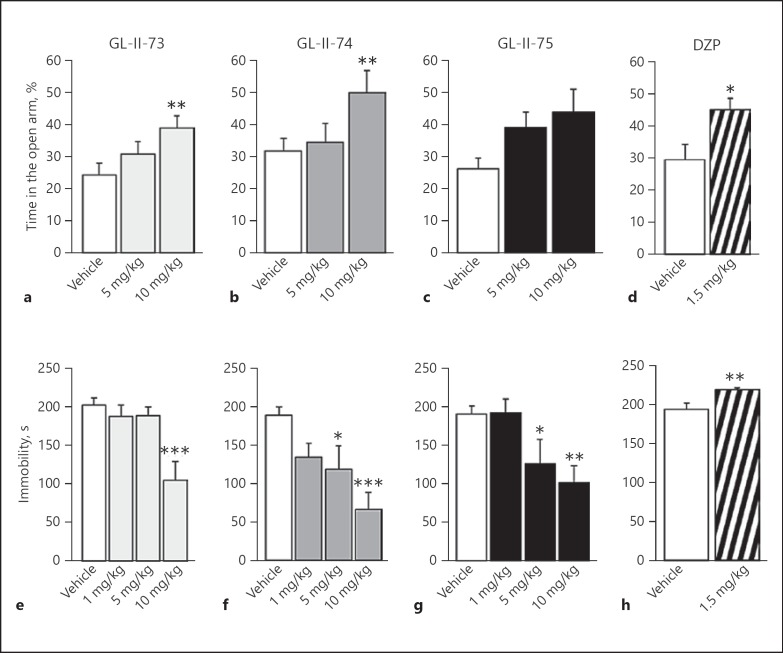Fig. 3.
Anxiolytic and antidepressant properties of novel ligands compared to diazepam (DZP). Potential anxiolytic action of the new IBZD amide ligands GL-II-73 (a), GL-II-74 (b), and GL-II-75 (c) at 5 or 10 mg/kg and the reference non-selective GABA-A receptor PAM DZP (1.5 mg/kg; d) was assessed in mice (50% females) using the elevated plus maze. Animals received vehicle or the ligand GL-II-73 (n(0) = 13, n(5) = 13, and n(10) = 14), GL-II-74 (n(0) = 14, n(5) = 13, and n(10) = 14), GL-II-75 (n(0) = 13, n(5) = 14, and n(10) = 13), or DZP (n(0) = 11 and n(1.5) = 10) 30 min before testing. A significant increase in the time spent in the open arms was used as an index of potential anxiolytic action. Sex as a cofactor was not significant (p values ≥0.17). Potential antidepressant properties of the ligands were assessed in male mice using the forced swim test (e–h). Mice were placed in an inescapable transparent tank filled with water (25 cm, 26 ± 1°C) for a period of 6 min. Immobility is defined as the minimum amount of movement to stay afloat, between the second and the sixth minute of testing. Mice were injected following serial i.p. administrations at 1, 5, or 10 mg/kg for the new ligands (GL-II-73: n(0) = 8, n(1) = 8, n(5) = 6, and n(10) = 8; GL-II-74: n(0) = 8, n(1) = 8, n(5) = 8, and n(10) = 8; GL-II-75: n(0) = 8, n(1) = 8, n(5) = 8, and n(10) = 9) or 1.5 mg/kg for the DZP (n(0) = 12 and n(1.5) = 12). Significant decreased immobility characterized the potential antidepressant-like efficacy of the ligand. * p < 0.05, ** p < 0.01, and *** p < 0.001 compared to vehicle. All values are represented as mean ± standard error of the mean.

